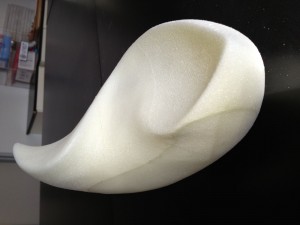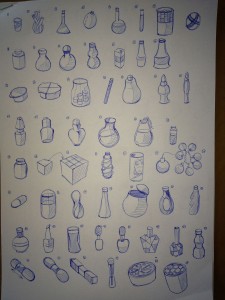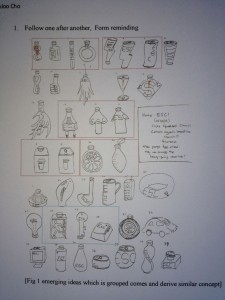School of Design and Human Engineering
James A. SelfLogin
Assistant Professor / Ulsan National Institute of Science and Technology (UNIST)



Dr James Self is an Assistant Professor of Design at the School of Design and Human Engineering (DHE),
Ulsan National Institute of Science and Technology (UNIST), South Korea.
He is director of the dpr research lab (Design Practice Research) and a member of the Product Innovation & Invention Research Group at the DHE.
Dr. Self holds a doctorate in industrial design practice, completed at Kingston University London in 2011. Previous to this, Dr. Self worked for several years within the design industry in London and Sydney, Australia. Dr. Self also holds degrees in Design Representation (BA) and Digital Modelling with Rapid Prototyping (MA).
His research interests explore the designer’s approaches to and use of designerly tools in support of design thinking and design activity (dpr Lab). Research findings continue to be disseminated through international conference papers, presentations, invited seminar talks and peer reviewed academic journal articles.
Dr Self is a member of the DRS (Design Research Society) and DRN (Drawing Research Network). He is a peer reviewer for the international ACM SIGCHI conference (Computer Human Interaction) and acts as a committee member for the DRS EKSIG (Experiential knowledge) special interest group.
Postgraduate and Research Student Oppertunities
Are you interested in design practice, design tools or designerly ways of thinking knowing and doing? Would you like to study at one of Korea’s top research universities with outstanding facilities, all English instruction and supportive faculty?
For an inital, informal discussion please contact Dr. James Self at the School of Design & Human Engineering (DHE), Ulsan National Institute of Science and Technology (UNIST):
E: jaself@unist.ac.kr / T: +82 (0)52 217 2722.
James A. Self, 901-8, DHE, Ulsan National Institute of Science and technology, UNIST-gil 50, Eonyang-eup, Ulju-gun, Ulsan, 689-798.
1. Sketching vs. CAD, Why Ask?
Self, J (2012) Sketching vs. CAD, Why Ask? Core77 Design Magazine. Core77. [Click]
2. Design Activity Perceptions and Performance: Investigating the relationship between expertise and practice
Self, J Evans, M & Dalke, H (2012) Design Activity Perceptions and Performance: Investigating the relationship between expertise and practice. Design Journal. (In peer review)
3. To Design is to Understand Uncertainty.
Self, J (2012) To Design is to Understand Uncertainty. Core77 Design Magazine. Core77. [Click]
4.Innovation in Knowledge Exchange: An approach to the dissemination of research findings in support of design practice.
Self ,J Dalke, H & Evans, M (2012) Innovation in Knowledge Exchange: An approach to the dissemination of research findings in support of design practice. Journal of Art, Design and Communication in Higher Education, 10(2) pp127-146
5. Innovation in Knowledge Exchange: An approach to the dissemination of research findings in support of design practice.
Self ,J Dalke, H & Evans, M (2011) Innovation in Knowledge Exchange: An approach to the dissemination of research findings in support of design practice. In Proceedings of Eksig2011 Skin Deep: Experiential knowledge and multi sensory communication. University of the Arts, Farnham, UK.
6. Reflections on the Designer’s Sketch.
Self, J (2010) Reflections on the Designer’s Sketch. KIOSK Magazine. Issue 04. Kingston University Press. Isbn 978-0-9557365-3-7
7. The Sharpest Tool in the Box: An investigation of complex relationships between the industrial designer, design tools and design practice.
Self ,J Dalke, H & Evans, M (2010) The Sharpest Tool in the Box: An investigation of complex relationships between the industrial designer, design tools and design practice. In Proceedings of DesRes 2010. Loughborough University. Loughborough. UK
8.Industrial Design Tools and Design Practice: An approach for understanding relationships between design tools and practice.
Self ,J Dalke, H & Evans, M (2009) Industrial Design Tools and Design Practice: An approach for understanding relationships between design tools and practice. In Proceeding of IASDR09 Design Rigor and Relevance. Seoul. South Korea.
9.The Character of Design Tools: A Framework for Describing the Character of Design Tools and Their Relationship to Industrial Design Practice.
Self ,J Dalke, H & Evans, M (2009) The Character of Design Tools: A Framework for Describing the Character of Design Tools and Their Relationship to Industrial Design Practice. In Proceeding of IASDR09 Design Rigor and Relevance. Seoul. South Korea.
10. The In-This-World Digital Design Tool and Its Influence upon Reflective Practice.
Self. J, Dalke. H & Evans, M (2008) The In-This-World Digital Design Tool and Its Influence upon Reflective Practice. RX Futures Conference Series 08. Reading University Graduate School. Reading. UK
11.Designers as Futurists and Their Use of Design Tools
Invited Talk
Designers as Futurists and Their Use of Design Tools. Catch the Future Seminar Series. Korean Advanced Institute of Science and technology, Department of Industrial Design. 12th April 2012
12.The Language of Design, Designerly Tools and Design knowledge.
Invited Talks
The Language of Design, Designerly Tools and Design knowledge. Lougnborough Design School, Loughborough University. 27th June 2012
Overview
This course is an introduction to the fundamentals on developing 3 dimensional form designs and understanding the concepts of product design. Firstly, students will learn 3 dimensional form construction using paper, wire and foam core with the help of idea sketching. Secondly, students will understand the process of design through the study of manufactured designed objects. Finally, through designing low-tech products, students will learn abilities from solving the observed problems to constructing a prototype as a final result.
Course Aims
The course’s primary concern is to foster strategies for dealing with from and observation techniques. To then apply these techniques to the solution of a design problem and its resolution through the application of techniques through a process of design.
Course Photographs & Student Work
Paper Tower Project: motif design
Student Towers

Rectaliniar Form Study: Clay conceptual sketch models

Organic Form Study: Final volume
Course Description
The course aims to foster awareness and understanding of industrial and engineering design theory and methodology through an exploration of the design process, the use of design representation and investigation of design thinking. The course provides a framework for exploring contemporary design theory and methodology through a focus on design as process the use of various digital, analog and hybrid design tools used in the activity of design and the designer’s approach to and understanding of design activity (design thinking).
Course Aims
The aims of this course are to enable students to be better recognise, critique and discuss, using appropriate vocabulary, academic tone and register, design theory and methodology; with particular focus on industrial and engineering design practice. The course aims to develop capabilities in gathering evidence, critical analysis and presenting complex ideas and concepts both orally through presentation and through a written essay assignment.
Course Photopraphs

Practice based excercise to explore divergent thinking, 10×10
concept ideas

Classification of design representations
Course Description
Product and industrial designers are required to possess the ability to understand material properties, processes or manufacture and the technical requirements of a design. Departing from engineering design practice however, product designers must also develop an awareness of product aesthetic and semantic appeal. How do the color, texture and feel of a product and the materials used in its production create product personality?
This course explores relationships between material selection and use, processes of production and their influence upon the design and aesthetic of contemporary products. The course reviews material properties and current approaches to manufacture in product design. The relationship between materials, their strengths and limitations, production methods and design aesthetics are explored through case-study examples and studio based design and realisation projects (making, prototyping & production).
Course Aims
This course deals with engineering and manufacturing design issues, product realisation skills and methods of production to explore the critical relationship between materials, manufacture and design. Key areas covered by the course are:
The courses aims to develop knowledge and understanding of the ways material properties and processes of manufacture relate to and influence design aesthetic, semantic appeal and product personality.
Course Description
This course covers the theory, concepts, methodology and practices associated with innovative product development. In order to understand the concepts and principles that inform an understanding of innovation, students will search various sources to identify concepts and ideas related to product innovations. They will then discuss their findings in terms of key factors in innovative design and synthesis these findings within their own understanding of innovation within the product development process. The outcome of the course will be an academically written paper about innovative product design and development.
Course Aims & Expectations
Through conducting theoretical and empirical research, the course aims to meet the following three learning objectives:
After meeting these aims we will suggest some key factors, concepts, theories and principles that inform the design methods and processes that lead to product innovation. These ideas will then be used to inform an approach to the product development and/or design process that fosters innovation in new product development.